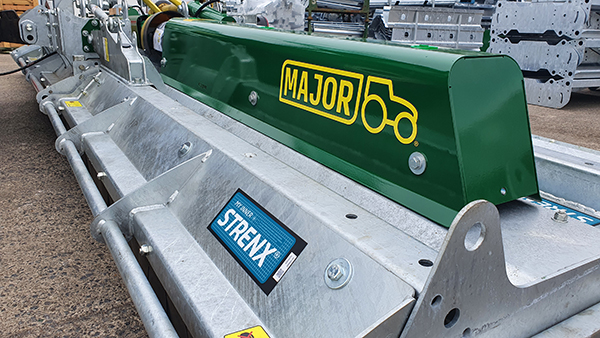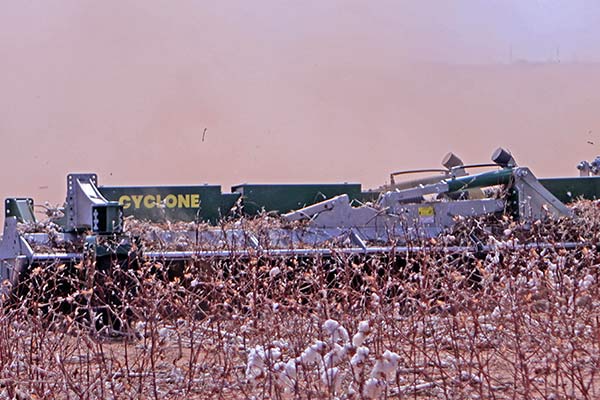“Farmers have to work in the wet weather we frequently get in Ireland. And if they’re working near the coast, they have to deal with the salty sea air, too. These conditions make machinery deteriorate more quickly,” begins Martin Walsh, US Sales Director at Major Equipment. “So we started using better steel and galvanizing our products at the very beginning to improve performance and increase their lifespan.”
Galvanizing is widely regarded as the ultimate form of corrosion protection. Buildings, bridges, utilities and many external structures use steel components dipped in molten zinc to resist corrosion for several decades.
Shredders and cutters used in sandy areas or at low cutting heights have to withstand severe abrasion. In painted machinery, the powder coating is rubbed away, exposing the raw steel to oxidation and eventually rust. When steel rusts and becomes unstable, the result is complete deck failure. Ordinary steel working in areas sprayed with fertilizer or herbicides are also susceptible to corrosion.
MAJOR cutters and shredders are built with high-performance Strenx™ 700 MC structural steel, which is stronger yet lighter than standard steel. The high yield strength of Strenx™ increases capacity, resistance against fatigue and stability against vibration. Combined with hot-dip galvanization, MAJOR cutters and shredders will outlive ordinary mowers, therefore providing the ultimate return in terms of performance and investment.
“We design and construct our products to last longer than ordinary machinery and galvanization adds several decades of life expectancy over paint coatings,” continues Martin. “We’ve used galvanized steel in our machinery for many years and it’s standardized on cutters and shredders. This ensures our customers are getting a durable, premium product.”
What is hot-dip galvanizing?
The hot-dip galvanizing (HDG) is a multi-stage process. First, the steel product must be prepared. All dirt and contaminants are degreased and caustically cleaned. Then, the steel is “pickled” – steel is immersed in an acid bath to remove mill scale and iron oxides. Next is surface preparation called “fluxing” where any remaining oxides are stripped using a zinc ammonium chloride solution to form a protective layer before the steel goes to the next stage.
The fully prepared steel is immersed in a “zinc kettle” of molten zinc at a temperature of around 842-degrees Fahrenheit (450-degrees Celsius). A metallurgical reaction between the iron and the zinc creates a zinc-iron alloy coating that is permanently bonded in this “kettle”. The zinc coats inside and outside surfaces ensuring total protection from corrosion.
Finally, each piece is thoroughly inspected before being sent for final assembly.
Learn more about galvanization here.




